Ullikummi – Genderless, Blind, Deaf Rock Monster Created For Strategic Purposes In Beliefs Of Hurrian People
A. Sutherland - AncientPages.com - Our knowledge about Ullikummi and Kumarbi is derived entirely from extant Hittite texts and mythological records. These texts are called the Kumarbi Cycle, which encompasses several important works. Two notable components of this cycle are the Kingship in Heaven: also known as the Song of Kumarbi or the Hittite Theogony.
Another piece is included in this cycle and refers to the Song of Ullikummi.
The Muwatalli II-Alaksandu treaty, which mentions Kumarbi among the divine witnesses. Troy Museum. Image credit: Dosseman - CC BY-SA 4.0
These texts are ancient records and invaluable windows into the mythology and religious beliefs surrounding Kumarbi in Hittite culture. They are the primary sources for scholars and researchers, providing profound insights into ancient Near Eastern mythology and religion.
Like many ancient belief systems, the Hittite religion featured a structured divine hierarchy. Certain deities held greater power and cosmic significance within this system than others.
At the apex of this pantheon stood the storm god, who played a central role in the Hittite worldview. This supreme deity was entrusted with the crucial task of sustaining life on earth and ensuring the supply of essential resources for human survival.
The storm god's position in the Hittite cosmos resembles other prominent deities in ancient religions. For instance, this role parallels that of Zeus in Greek mythology and Thor in Norse mythology.
In the Hurrian people's mythological traditions, Kumarbi became one of the main gods in Hittite culture. He was the foremost son of Anu, the father of Ullikummi, and held a prominent position in the Hurrian pantheon. He was a deity revered as the "father of gods."
He fathered Ullikummi, a monstrous giant with a unique origin because he was born from a mostly unusual union between Kumarbi and a sea god's daughter, Sertapsuruhi, also referred to as an unusual though magnificent boulder that could breathe, feel, and think as we humans do.
Wall plate with a relief of God, which is analogous to Kumarbi (the chief god of the Hurrians). He holds his sickle and his father's masculinity in his hands. Image credit: Zde - CC BY-SA 4.0
Ullikummi, was also particularly noteworthy, as he was entirely formed from diorite, a dark, coarse-grained igneous rock.
We learn about his story from the “Song of Ullikummi,” which has come down to us in several fragmentary copies, each of which covers several tablets. The text tells of a plot by Kumarbi to depose Teshub from his supremacy by creating a monstrous stone as champion.
The genderless, deaf, blind, yet sentient volcanic rock monster, Ullikummi, was created for strategic purposes. He was intended to serve as a weapon against the storm god and his allies and eventually take the position of Teshub, the storm deity, from his celestial throne. His plan was also to destroy the city of Kumme (Kummiya, the residence of Teshub).
But before it could happen, Kumarbi had to protect Ullikummi from detection by several powerful deities, such as the storm god, the sun god, and the goddess of fertility, Ishtar.
In Hurrian myth, Kumarbi devised a strategic plan to protect his son, Ullikummi. He transported Ullikummi to the underworld and positioned him on the shoulders of Upelluri, an ancient deity associated with dreaming, holding the earth and the sky on his shoulders, which reminds us of the Greek Atlas.
This placement served a crucial purpose: to allow Ullikummi to grow and develop without being detected by the weather god, Teshub, and his allies.
A possible representation of scenes from the Song of Ullikummi on the golden bowl of Hasanlu. Image credit: Emtadbir - CC BY-SA 4.0
Ullikummi’s positioning was temporary but necessary for his concealment and growth. However, other deities, notably a god associated with water, Ea and Enlil, quickly recognized the nature of Kumarbi's actions. They interpreted this maneuver as a malevolent plan, likely aimed at eventually overthrowing Teshub from his position of power.
Encouraged by his brother, Tashmishu, Teshub goes for help to Ea, who consults with Enlil. Subsequently, he proceeded to consult Upelluri, asking about his awareness of the basalt rock giant that was developing on his shoulders. Upelluri's lack of knowledge regarding this matter indicated that divine intervention was required to stop Kumarbi's malevolent plan.
Ullikummi exhibited an extraordinary growth rate. Within a month, the giant’s size increased to cover an area of roughly one acre. This rapid expansion was likely a strategic feature designed to enhance his effectiveness as a weapon against other deities.
The Middle East around 2300 BC. Image credit: Jolle at Katalaan Wikipedia - CC BY-SA 3.0
The accelerated growth pattern suggests a deliberate mechanism to quickly establish Ullikummi as a formidable force in the divine realm.
Ullikummi - a formidable mythological entity - posed a significant threat to the established celestial order. He was dangerous, demonstrating remarkable resilience, remaining unaffected by the storm god Teshub's lightning strikes and Ishtar’s prayers.
The combination of the giant’s invulnerability to divine attacks forced Ea to react. Ea cut off the giant from its foundation with an ancient saw previously used to separate heaven and earth.
This mythological narrative illustrates the complex power dynamics and strategic maneuvering among deities in Hurrian lore, highlighting themes of succession, power struggles, concealment, and divine conflicts.
Written by – A. Sutherland - AncientPages.com Senior Staff Writer
Copyright © AncientPages.com All rights reserved. This material may not be published, broadcast, rewritten or redistributed in whole or part without the express written permission of AncientPages.com
Expand for referencesReferences:
Güterbock, Hans Gustav. “The Song of Ullikummi Revised Text of the Hittite Version of a Hurrian Myth.” Journal of Cuneiform Studies 5, no. 4 (1951): 135–61.
History, Captivating. Hittites
Brown, A. Hittites: A Powerful Ancient Civilization
More From Ancient Pages
-
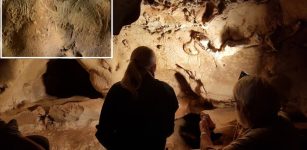 Neanderthal Cave Engravings Identified As Oldest Known, More Than 57,000 Years Old
Archaeology | Jun 22, 2023
Neanderthal Cave Engravings Identified As Oldest Known, More Than 57,000 Years Old
Archaeology | Jun 22, 2023 -
 Beautiful Ancient Viking Jewelry Made By Skilled Craftsmen
Artifacts | Dec 29, 2015
Beautiful Ancient Viking Jewelry Made By Skilled Craftsmen
Artifacts | Dec 29, 2015 -
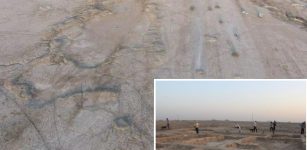 Large 4,000-Year-Old Sumerian Port Discovered In The Desert In Iraq
Archaeology | Apr 4, 2018
Large 4,000-Year-Old Sumerian Port Discovered In The Desert In Iraq
Archaeology | Apr 4, 2018 -
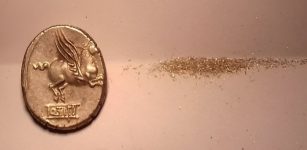 Romans Were Early Pioneers Of Recycling – New Evidence Reveals
Archaeology | Oct 17, 2023
Romans Were Early Pioneers Of Recycling – New Evidence Reveals
Archaeology | Oct 17, 2023 -
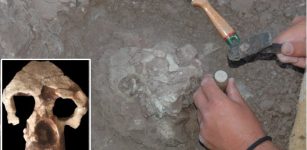 New Fossil Ape Challenges The Story Of Human Evolution
Evolution | Aug 24, 2023
New Fossil Ape Challenges The Story Of Human Evolution
Evolution | Aug 24, 2023 -
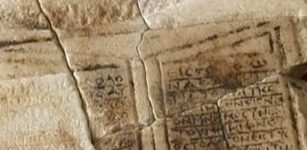 Last Fragment Of Early Christian Christogram Found In Ancient City Of Parthicopolis, Bulgaria
Artifacts | Sep 9, 2015
Last Fragment Of Early Christian Christogram Found In Ancient City Of Parthicopolis, Bulgaria
Artifacts | Sep 9, 2015 -
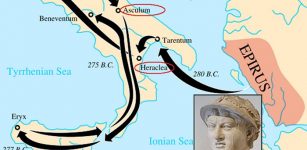 Where Does The Expression “Pyrrhic Victory” Come From?
Ancient History Facts | Apr 18, 2018
Where Does The Expression “Pyrrhic Victory” Come From?
Ancient History Facts | Apr 18, 2018 -
 Powerful Ancient Maya Kaanu’l Dynasty And Their Intriguing Reliefs Of Mythical Animals And Celestial Ancestors In Quintana Roo, Mexico
Archaeology | Oct 23, 2024
Powerful Ancient Maya Kaanu’l Dynasty And Their Intriguing Reliefs Of Mythical Animals And Celestial Ancestors In Quintana Roo, Mexico
Archaeology | Oct 23, 2024 -
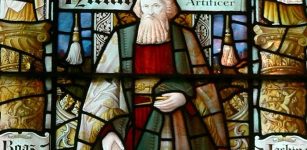 Legendary Hiram Abiff – Master And Chief Architect Loved By Few And Hated By Many Including King Solomon
Featured Stories | Jan 27, 2019
Legendary Hiram Abiff – Master And Chief Architect Loved By Few And Hated By Many Including King Solomon
Featured Stories | Jan 27, 2019 -
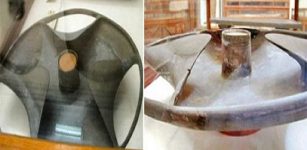 Schist Disk – Mysterious Piece Of Sophisticated Technology Could Rewrite History – Scientists Are Not Sure What They Are Dealing With
Artifacts | Jun 30, 2013
Schist Disk – Mysterious Piece Of Sophisticated Technology Could Rewrite History – Scientists Are Not Sure What They Are Dealing With
Artifacts | Jun 30, 2013 -
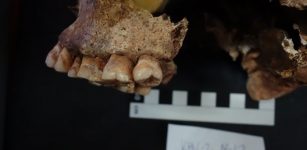 Milk Enabled Massive Steppe Migration
Archaeology | Sep 15, 2021
Milk Enabled Massive Steppe Migration
Archaeology | Sep 15, 2021 -
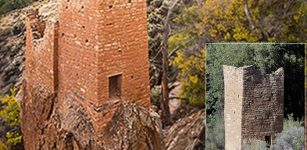 Ancient Ruins Of Hovenweep: Impressive Puebloan Masonry
Civilizations | Mar 15, 2016
Ancient Ruins Of Hovenweep: Impressive Puebloan Masonry
Civilizations | Mar 15, 2016 -
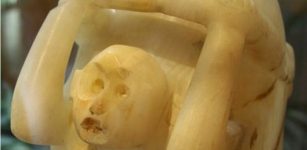 Pulque: Ancient Drink Of The Gods Is Popular Again But It Has Odd Side-Effects
Ancient Traditions And Customs | Jun 29, 2017
Pulque: Ancient Drink Of The Gods Is Popular Again But It Has Odd Side-Effects
Ancient Traditions And Customs | Jun 29, 2017 -
 Hermes – Divine Trickster, Psychopomp, Patron Of Merchants And Thieves In Greek Mythology
Featured Stories | Jan 15, 2019
Hermes – Divine Trickster, Psychopomp, Patron Of Merchants And Thieves In Greek Mythology
Featured Stories | Jan 15, 2019 -
 Why Napoleon’s Invasion Of Russia Was A Fiasco
Ancient History Facts | Mar 31, 2017
Why Napoleon’s Invasion Of Russia Was A Fiasco
Ancient History Facts | Mar 31, 2017 -
 Unusual Ancient Spider Pipes Of Tennessee – Were They Used By Shamans To Enter The Spirit World?
Artifacts | Feb 18, 2018
Unusual Ancient Spider Pipes Of Tennessee – Were They Used By Shamans To Enter The Spirit World?
Artifacts | Feb 18, 2018 -
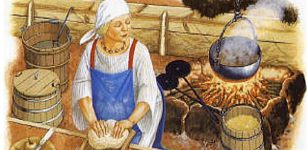 Cooking Gear Found In Graves Of Viking Men And Women
Archaeology | Jun 27, 2019
Cooking Gear Found In Graves Of Viking Men And Women
Archaeology | Jun 27, 2019 -
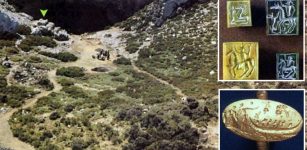 Sophisticated Lenses Of Minoans Discovered In The Sacred Idaion (Ideon) Cave
Civilizations | May 31, 2017
Sophisticated Lenses Of Minoans Discovered In The Sacred Idaion (Ideon) Cave
Civilizations | May 31, 2017 -
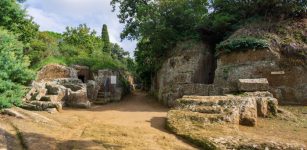 Etruscan City Of Cerveteri With Magnificent House-Like Tombs Decorated With Scenes From Life And Death
Featured Stories | May 17, 2022
Etruscan City Of Cerveteri With Magnificent House-Like Tombs Decorated With Scenes From Life And Death
Featured Stories | May 17, 2022 -
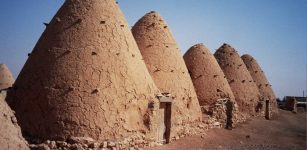 Beehive’ Adobe Houses Of Ancient City Of Harran, Upper Mesopotamia
Civilizations | Dec 28, 2018
Beehive’ Adobe Houses Of Ancient City Of Harran, Upper Mesopotamia
Civilizations | Dec 28, 2018




